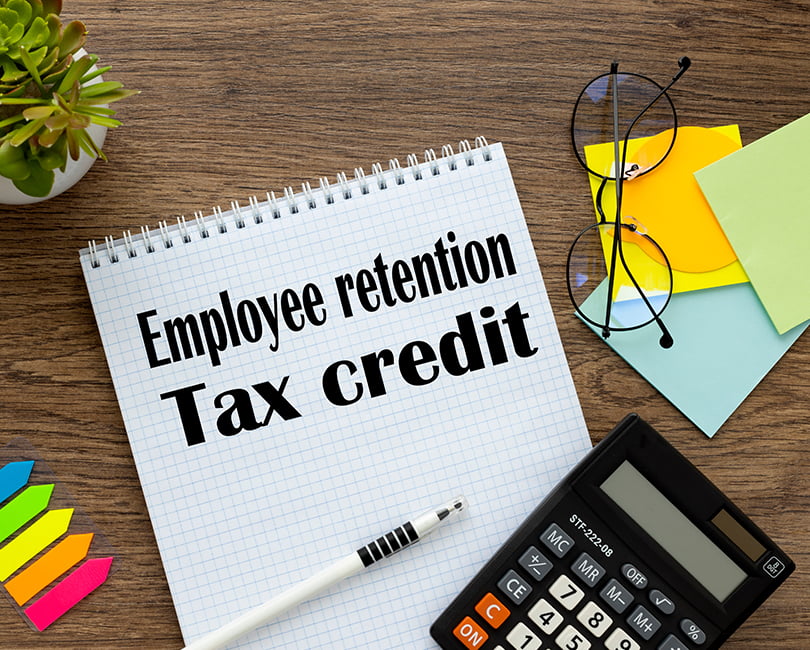2024 ERTC Options: The Good, the Bad and the Ugly

Considering ongoing complexities and updates regarding the Employee Retention Tax Credit (ERTC), businesses must stay informed about their options. This blog revisits the ERTC program, highlighting recent changes, ongoing challenges, and actionable steps for qualifying businesses to take.
ERTC – The Good
As a reminder, in response to the COVID-19 Pandemic, the government created several programs to assist businesses facing financial difficulties. One of these programs was the Employee Retention Tax Credit (ERTC), available for tax years 2020 and 2021. In April 2024, IRS Commissioner Werfel told the Senate finance committee that the IRS has “processed about 3.6 million claims worth approximately $230 billion to businesses“. Although the program has closed for 2020, businesses can still file valid claims for 2021. The 2021 credit is a maximum of $7,000 per employee per quarter that you qualify for. That can potentially result in up to $21,000 per employee!
ERTC – The Bad
The IRS has faced increasing delays in processing ERTC claims as the months passed and the number of claims increased. What was intended to be a business lifeline has become a prolonged and drawn-out process. Over the last three and a half years, processing times have extended from 4-6 months to sometimes over a year.
On September 14, 2023, the IRS stopped processing any claims received after that date until January 2024. As of December 9, 2023, the IRS data indicated 1,057,000 unprocessed 941X forms, most likely ERTC claims. This deferral period was necessary due to the large backlog of unprocessed ERTC claims and the need to address many claims filed either fraudulently or in error. This pause in processing new claims allows the IRS to catch up on the backlog, scrutinize claims more carefully, and apply additional review and audit techniques to prevent paying invalid claims.
ERTC – The Ugly
Along with a pause in processing new claims, the IRS also announced that “hundreds of criminal cases are being worked, and thousands of ERTC claims have been referred for audit.”
The IRS believes that most legitimate claims have already been filed and that the recent influx of claims is more likely driven by aggressive marketing campaigns, making them more prone to being ineligible or fraudulent. The IRS stated, “The continued aggressive marketing of these schemes is harming well-meaning businesses and delaying the payment of legitimate claims, which makes it harder to run the rest of the tax system. This harms all taxpayers, not just ERTC applicants.”
Over the past two years, the ERTC has been one of the IRS’s top fraud alerts, as many businesses were misled about their eligibility and filed improper claims. Commissioner Werfel urged businesses with legitimate claims to continue filing and to work with a trusted tax professional who understands the complex ERTC rules rather than relying on promoters seeking easy money.
The IRS created an ERTC Eligibility Checklist to prevent ineligible claims and reminded taxpayers to take “precautionary steps to independently verify their eligibility to receive the credit before applying through a promoter.” Many promoter firms charge a % of the ERTC, ranging from 10% to 25%. Consequently, the more ERTCs you receive, the higher their fee. The IRS believes this situation incentivized extreme liberties and overly aggressive interpretations of the ERTC requirements by many promoter firms.
Many of these promoters, though not all, relied on the historically low audit rates and limited risk on their part, assuming that if claims were audited and found ineligible, they would repay the ERTC fee they charged to the employer. However, if audited and found ineligible, the employer will likely be responsible for paying penalties and interest and repaying the ENTIRE ERTC amount. In most cases, these costs are not covered by the agreements with these promoters, leaving the employer to bear all the risk and potential financial burden.
To reduce the number of improper claims filed, the IRS will impose a $500 penalty per instance on preparers who fail to exercise due diligence in determining qualification. Additionally, preparers can face “Accuracy” related penalties of up to 20% if the IRS reduces the refund due to inaccuracies and Civil Fraud Penalties of up to 75% in cases determined to be civil fraud. In egregious cases, the IRS may file criminal charges that could result in jail time.
To further educate employers, the IRS released Red Flags for ERTC Claims and warned that “businesses should be cautious of advertised schemes and direct solicitations promising tax savings that are too good to be true. Taxpayers are always responsible for the information reported on their tax returns.”
The IRS identifies red flags such as promises of qualifying in minutes, guarantees of risk-free claims, or offers of advanced payment on the ERTC. Many of these claims are based on improper interpretations of IRS guidance, often taking significant liberties. Additionally, promoters often fail to address the impact on Paycheck Protection Program (PPP) loans, overhead rates calculated under the Federal Acquisition Regulations (FAR), and requirements to amend business income tax returns to reduce wage expense by the ERTC, which creates taxable income for the claiming company.
IRS Updates on ERTC Processing
On August 15, 2024, the IRS released IR-2024-212, providing updates on the ERTC. The announcement indicated that the IRS has identified 50,000 “low-risk” ERC claims deemed valid and is quickly processing them for payment. Additionally, they have sent 28,000 letters to businesses with potentially incorrect claims, totaling an estimated $5 billion in suspected improper claims. Another 30,000 letters are planned to be sent for claims and estimated at over $1 billion in invalid or errant claims. These letters explain the reasons for disallowance, such as lack of valid government shutdown, insufficient revenue reduction, or improper wage claims. Businesses have 30 days to appeal and provide proof of their ERTC claim.
Feel You Filed an Improper/Ineligible Claim?
On October 19, 2023, the IRS introduced a special process for withdrawing an ERTC claim. This service enables any business that filed a claim in error and has not yet received a refund to withdraw the claim without incurring penalties, interest, or criminal charges. However, the IRS was clear that withdrawing a fraudulent claim would not exempt individuals from potential criminal investigation and prosecution.
To qualify for claim withdrawal, businesses must meet all the following specific criteria:
- You made the claim on an adjusted employment tax return (Forms 941-X, 943-X, 944-X, CT-1X).
- You filed your adjusted return only to claim the ERTC and made no other adjustments.
- You want to withdraw the entire amount of your ERTC claim.
- The IRS has not paid your claim, or the IRS has paid your claim, but you have not cashed or deposited the refund check.
Already Received Your ERTC Claim and Don’t Qualify for Withdrawal?
If you’ve already received your ERTC claim and believe you may have filed incorrectly, you may be eligible to participate in the reopened Employee Retention Credit – Voluntary Disclosure Program (ERC-VDP). The ERTC-VDP, which closed in March 2024, resulted in $1.09 billion in errant ERTC funds being disclosed. Due to the program’s success, the IRS has reopened the ERTC-VDP for a second round from August 15, 2024, until November 22, 2024. Under this updated program, businesses can inform the IRS of their intent to return 85% of the ERTC funds received in error without facing penalties. IRS Commissioner Danny Werfel emphasized the importance of this opportunity for businesses misled by aggressive marketing tactics to avoid future compliance actions.
Businesses that have received their ERTC refund and have NOT been notified of any disallowance should act immediately to resolve incorrect claims and avoid potential audits, full repayment, penalties, and interest.
Next Steps
If you have any concerns regarding your previously filed ERTC, such as seeking a second opinion on qualification, assistance with ERTC withdrawal process, returning received funds, or if you require an analysis of qualification for a 2021 unfiled ERTC claim, please don’t hesitate to reach out to Stambaugh Ness. We possess extensive experience in assisting businesses not only in maximizing their eligible credits but also in effectively resolving ERTC-related issues.



